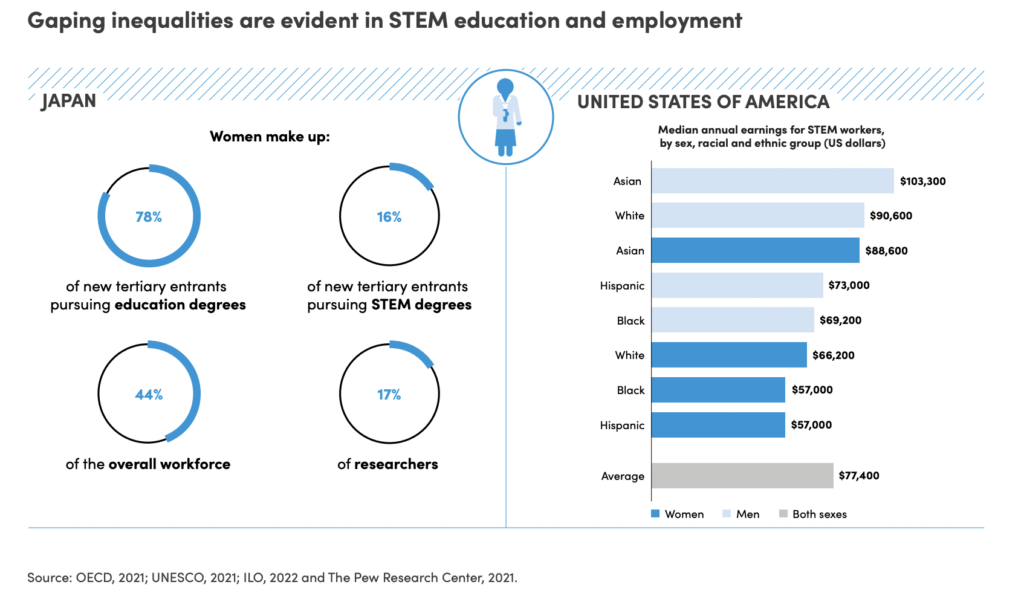
Princess Noor's Courageous Legacy of Light: Empowering Women in the Non-Negotiable Battle for Rights Through Education.

Princess Noor Inayat Khan
As Princess Noor Inayat Khan bravely faced her captors, her heart ached with the pain of being stripped of her freedom. Her voice shook as she shouted “Liberte,” a cry for the very thing that had been ripped away from her. All she had ever wanted was to pursue her passion for music, but instead, she found herself caught up in a war that she never wanted to be a part of.
Despite the fear that gripped her, Noor knew that she had to do something to help. She was an anti-imperialist and abhorred fascism, her desire to fight for what was right led her to join the Women’s Auxiliary Air Force. As the first woman wireless operator sent to Nazi-occupied France, Noor risked her life every day to send messages to Allied forces, knowing that the slightest mistake could mean certain death. Yet, even as she served with bravery and determination, Noor never forgot her true passion – music.
In her darkest moments, she would hum a tune to herself, finding solace in the beauty of a melody. And then, in the end, her courage was met with unimaginable cruelty. As she was tortured and killed, Noor’s final thoughts were of the freedom that she had fought so hard for. Her dreams of making music were never realized, but her legacy lived on as a symbol of courage and sacrifice in the face of tyranny.
As we commemorate Women’s Day on March 8, 2023, let us remember the bravery and sacrifice of Princess Noor Inayat Khan, who paid the ultimate price for her courage. Her unwavering commitment to justice and freedom inspires us to continue the fight for women’s rights and gender equality.
This year, the theme for the UN International Women’s Day is ‘DigitALL: Innovation and technology for gender equality.’ This theme is aligned with the priority theme for the 67th Session of the Commission on the Status of Women (CSW-67), “Innovation and technological change, and education in the digital age for achieving gender equality and the empowerment of all women and girls”.[1] Prolonged armed conflicts, military hostilities, and renewed efforts to restrict girls’ access to education exacerbate gender disparities in school attendance and learning. A staggering 54% of young females who lack formal education reside in nations grappling with crises.[2]
“Education is the most powerful tool for women’s empowerment.” – Dr Kiran Bedi, first female IPS officer in India and social activist. Women’s right to education is a critical component of gender equality. Education is essential for women’s empowerment and enables them to access better employment opportunities, make informed decisions about their lives, and participate fully in society. However, many women still face barriers to education, including lack of access, cultural and social norms, and discrimination. Governments, institutions, and communities must prioritize women’s education and create an enabling environment that supports women’s right to learn and grow.
Access to education is a fundamental human right, yet millions of girls around the world are still being denied this right. Despite the well-documented benefits of education, including poverty reduction and improved health outcomes, girls from the poorest households and rural areas continue to be left behind.
The latest report from UN Women and UNDESA highlight the ongoing challenges and disparities, revealing that it will take more than 50 years to achieve universal primary school completion for girls.[3] Urgent action is needed to address the barriers to education faced by marginalized girls and to ensure that every child has the opportunity to learn and succeed.
In addition to gender-based discrimination, discrimination based on factors such as race, ethnicity, religion, migratory status, and disabilities can also impede access to education. Research indicates that children with disabilities face even greater obstacles to early childhood education, with only 18% of girls with disabilities attending such programs compared to 28% of girls without disabilities, according to data from 42 countries.[4]
The COVID-19 pandemic has also further exacerbated inequalities in learning for girls and young women, deepening pre-existing disparities and exacerbating the impact of discrimination on access to education. It is crucial that efforts to promote gender equality in education are inclusive and intersectional, addressing the unique barriers faced by marginalized and disadvantaged communities.

Gender biases in education have limited girls’ choices in pursuing STEM education and careers. While more women than men are enrolled in tertiary education globally, only 35% pursue STEM fields and a mere 3% in ICT.[5] Teachers and parents often steer girls away from STEM, reinforcing the notion that certain professions are only suitable for men. This perception is reinforced by a lack of women role models in STEM. Multiple disadvantages, including race and ethnicity, exacerbate the gender gaps in STEM education and careers.
Black and Hispanic women in STEM jobs in the US earn approximately $20,000 less than the average and $33,000 less than their white male counterparts.[6] Seizing this opportunity to make bold commitments to promoting girls’ education, especially in STEM fields, can prioritize learning outcomes for marginalized communities and carry momentum toward the 67th session of the Commission on the Status of Women, where innovation and technological change will play a significant role in achieving gender equality and empowering women and girls.

Despite progress made, women around the world are still denied basic human rights including education, healthcare, and employment opportunities. Women continue to face gender-based violence, the gender pay gap is an ongoing issue, and women’s healthcare needs are often neglected. Discriminatory laws and practices must be dismantled, women must be empowered to participate fully in society, and a world created where every woman can realize her full potential. Women’s rights are non-negotiable, and we must continue to fight for gender equality and empower women to live free, full, and equal lives. Let us honour the legacy of Princess Noor Inayat Khan by continuing to fight for gender equality and women’s rights.
[1]CSW67 (2023), UN Women – Headquarters, https://www.unwomen.org/en/csw/csw67-2023 (last visited Mar 6, 2023).
[2] the Global Campaign for Education & RESULTS Educational Fund, MAKE IT RIGHT: Ending the Crisis in Girls’ Education, https://www.results.org/wp-content/uploads/make_it_right_report.pdf (last visited Mar 6, 2023).
[3] Progress on the sustainable development goals the gender snapshot 2022, UN WOMEN (2022), https://data.unwomen.org/sites/default/files/documents/Publications/GenderSnapshot_2022.pdf (last visited Mar 6, 2023).
[4] UNESCO Education Monitoring World Inequality Database, 2022.
[5] OECD, 2021; UNESCO, 2021; ILO, 2022 and The Pew Research Center, 2021.
[6] OECD, 2021; UNESCO, 2021; ILO, 2022 and The Pew Research Center, 2021.







